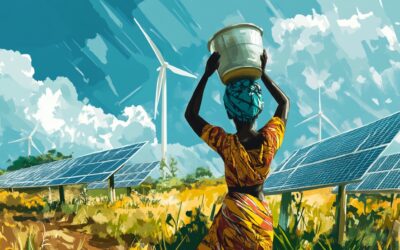Researchers have unveiled an optimistic report that the near elimination of plastic pollution by 2050 is a plausible outcome if global leaders effectively utilise an international treaty currently under negotiation.
The report was published in Science by a consortium of researchers from the University of California, including senior data scientist A. Samuel Pottinger from UC Berkeley’s Eric and Wendy Schmidt Center for Data Science and Environment.
The study underscores a critical premise: there are several policy pathways that negotiators could adopt to address the pressing issues of plastic production, use, and disposal. One of the proposed policy packages could significantly reduce planet-warming emissions in addition to tackling plastic waste.
Plastic has become an indispensable commodity in modern life, with its utilisation evident in various products ranging from nappies to furniture. To quantify this, by 2021, over 11 billion metric tons of plastic had been generated globally, which is equivalent to the mass of about 1.6 billion elephants. This massive production has introduced several adverse impacts, including ecosystem disruption, heightened human health risks, accelerated climate change, and increased societal inequities.
In their effort to curb this global crisis, international leaders have been working collaboratively since 2022. This month, South Korea will host a pivotal meeting aimed at finalising the first-ever legally binding international treaty on plastic pollution. This treaty is anticipated to bring about robust commitments from participating nations towards sustainable plastic management practices.
The research paper, “Pathways to reduce global plastic waste mismanagement and greenhouse gas emissions by 2050,” presents insights that have been developed further from previous works. The researchers previously introduced the Global Plastic Policy Tool, an AI-powered, open-source model that simulates the effectiveness of various policy interventions. Treaty negotiators have already utilised this tool, which leverages innovative regional data, to navigate the potential outcomes of critical policy interventions.
Pottinger emphasises that this treaty’s success hinges on being data-informed. “We’re hoping to see that the treaty’s proposals, grounded in the latest scientific data, will provide an accurate picture of the progress made towards these ambitious environmental goals,” he noted.
The team of authors behind this study comprises experts from both UC Berkeley and UC Santa Barbara, including notable researchers Ciera Martinez, Magali de Bruyn, Carl Boettiger, Roland Geyer, Nivedita Biyani, Neil Nathan, Molly R. Morse, and Elijah Baker, along with Douglas McCauley, co-director of the DSE.
The study highlights the urgency of addressing mismanaged plastic waste, which was estimated at 15% of the 425 million metric tons generated annually as of 2020. Without intervention, by 2050, annual plastic pollution could escalate to 121 million metric tons. Additionally, greenhouse gas emissions from plastic could increase by 37% from 2020 levels, reaching 3.35 gigatons of CO2 equivalent by mid-century.
To address these challenges, the researchers propose a combination of interventions. This four-step solution includes ensuring 40% of global plastic waste is recycled, capping new plastic production at 2020 levels, investing $50 billion in improved waste management infrastructure, and enforcing a high tax on packaging consumption.
Implementing this proposed policy package could drastically reduce plastic pollution to an estimated 11 million metric tons by 2050. Climate-wise, plastic-related emissions could decrease by one-third, equating to 2.09 gigatons of CO2 equivalent – a reduction comparable to removing nearly 300 million vehicles from the roads for a year.
While the scale of plastic’s current role in everyday life may seem to render such changes challenging, the study aims to demonstrate that a concerted and data-driven effort can yield substantial results. The permutations of policies needed might differ, but the foundation of possibility remains firm.




